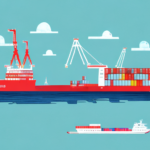Understanding the FedEx Non-Machinable Surcharge
The FedEx Non-Machinable Surcharge is an additional fee applied when a package cannot be processed by automated sorting systems. This surcharge is important for businesses and individuals to understand, as it can significantly impact shipping costs. In this article, we will explore the definition of the Non-Machinable Surcharge, its implications on shipping expenses, and effective strategies to minimize these costs.
What is the FedEx Non-Machinable Surcharge?
Definition and Criteria
The FedEx Non-Machinable Surcharge is levied on packages that require special handling and cannot be easily processed by machinery. This includes items that are:
- Irregularly shaped, such as tubes or barrels
- Too rigid or too flexible for automated systems
- Exceeding standard size dimensions
- Packaged in unconventional containers like soft-sided envelopes
For more detailed criteria, refer to FedEx’s official guidelines.
Cost Implications
The surcharge can range from $4.20 to $24.75 per package, depending on factors such as size, weight, and destination. For businesses shipping multiple packages monthly, these fees can accumulate quickly—for instance, a small business shipping 50 non-machinable packages could incur an additional $500 in surcharges each month.
Impact on Shipping Costs and Small Businesses
Increased Operational Expenses
Non-Machinable Surcharges add a significant layer to shipping expenses, especially for small businesses that rely on high-volume shipping. These additional costs can erode profit margins if not properly managed.
Challenges for Small Businesses
Small businesses may find it challenging to absorb these additional costs. For example, a business shipping custom-made fragile items might frequently trigger the surcharge, leading to higher overall shipping expenses.
Strategies to Avoid and Mitigate the Surcharge
Optimizing Packaging
Proper packaging is crucial in avoiding the Non-Machinable Surcharge. Use standard FedEx packaging options designed for machine processing, such as FedEx Express boxes and envelopes. Ensure that packages adhere to FedEx’s size and weight specifications to prevent additional fees.
Cost-Saving Measures
- Invest in specialized packaging materials to ensure packages are machine-friendly.
- Consolidate multiple items into a single package to reduce the number of surcharged packages.
- Utilize FedEx’s flat-rate boxes where applicable to control shipping costs.
Negotiating with FedEx
High-volume shippers may have the leverage to negotiate lower surcharge rates with FedEx. Presenting shipping data and demonstrating consistent shipping volumes can aid in securing more favorable terms.
Alternatives to FedEx and Comparing Shipping Surcharges
Exploring Other Carriers
Consider alternative shipping carriers like USPS or UPS, which may offer different surcharge policies and potentially lower costs for non-machinable packages. Each carrier has its own set of guidelines and fees, so it’s essential to compare options based on specific shipping needs.
Comparative Analysis
When evaluating shipping options, take into account all potential surcharges, not just the Non-Machinable Surcharge. Factors such as fuel surcharges, residential delivery fees, and package insurance should also be considered to determine the most cost-effective solution.
The Future of Shipping Surcharges in E-commerce
Trends and Adjustments
As e-commerce continues to grow, shipping carriers like FedEx are likely to adjust their surcharge policies to adapt to market demands and operational costs. Businesses should stay informed about these changes to optimize their shipping strategies accordingly.
Technological Advancements
Advancements in automation and packaging technology may reduce the incidence of non-machinable packages, potentially lowering the frequency and impact of surcharges in the future.
Conclusion
The FedEx Non-Machinable Surcharge presents a significant consideration for businesses that frequently ship packages. By understanding the criteria that trigger this fee, implementing effective packaging strategies, and exploring alternative shipping options, businesses can manage and potentially reduce their shipping costs. Staying informed about industry trends and maintaining flexibility in shipping practices are essential for minimizing the impact of surcharges and maintaining competitive pricing in the e-commerce landscape.






















